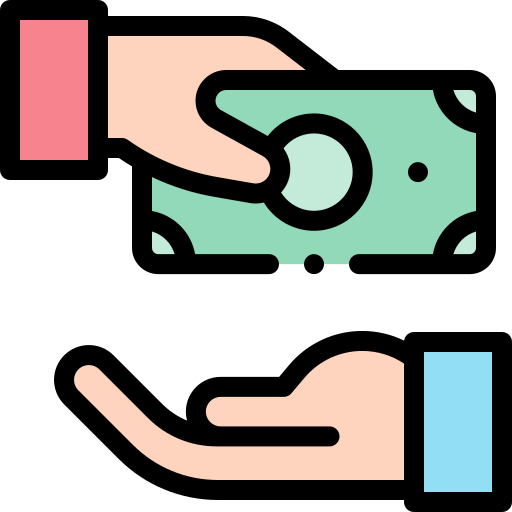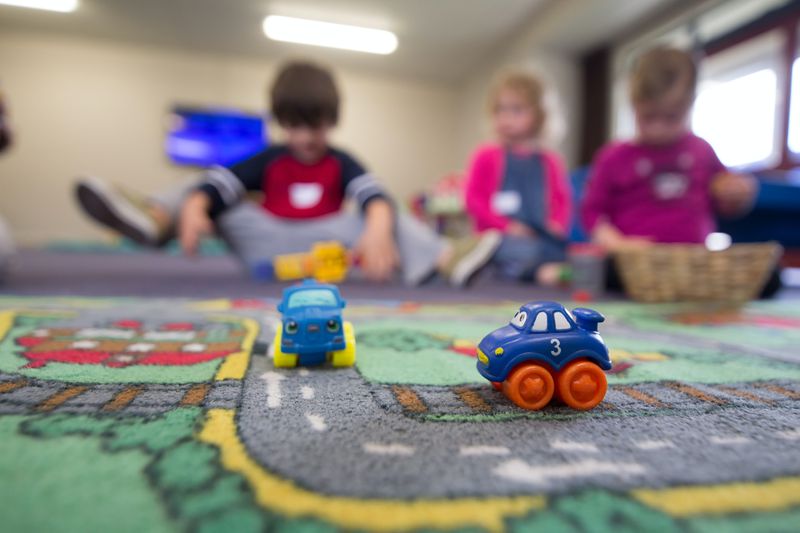 Photo by Tadeusz Lakota on Unsplash
Photo by Tadeusz Lakota on UnsplashTim is a four year old with a speech delay who may have autism spectrum disorder. He's been having difficulty adapting to the routines at his preschool and often screams for extended periods if he can't get what he wants.
His doctor decided a goal for Tim is to request what he wants, and his parents are considering engaging an Applied Behavior Analysis (ABA) therapist.
If you're a teacher, educator or caregiver of young children, you might be called on to work with an ABA therapist at some point. ABA therapy programs can help people with disabilities:
increase communication skills
improve attention, social skills, and memory
"decrease behaviors that are harmful or affect learning"
Where to Start

Behavior assessment and analysis is where the ABA therapistalways starts. The ABA therapist assesses the target behaviors that need to be changed by following the ABC acronym:
By looking carefully at how the antecedent triggers the behavior and how the consequence reinforces the behavior, the ABA therapist can come up with a plan to teach a more desirable behavior and put in place a consequence to reinforce the behavior.

A is for Antecedent — what happens right before the behavior occurs. It can be:
from the environment (such as a light going on or an undesired object)
from another person (such as a verbal request)
from the child (such as an anxious thought pattern)
Think of it as a trigger to the behavior.

B is for Behavior — the person's response to the antecedent. It can be:
an action (such as throwing an object)
a verbal response (such as screaming, "go away!")
a lack of response (such as refusing to acknowledge a request)
Keep in mind that the behavior serves a purpose. In people with autism, it's often to avoid doing something, get attention from someone, access a more enjoyable activity, or gain sensory stimulation.

C is for Consequence — what happens directly after the behavior. It can be:
something that the person gains (such as a hug or a verbal reprimand)
something that the person loses (such as no longer engaging in the activity they don't like)
no reaction to the behavior

By looking carefully at how the antecedent triggers the behavior and how the consequence reinforces the behavior, the ABA therapist can come up with a plan to teach a more desirable behavior and put in place a consequence to reinforce the behavior.
Case Study: Tim's Shoes
 Photo by BBC Creative on Unsplash
Photo by BBC Creative on UnsplashAt preschool, Tim is routinely asked to sit on a carpet with other children to put on his shoes before heading outside.
Every day, after sitting for two seconds, Tim screams and refuses to put his shoes on until everyone else has gone outside. Tim's teacher, Geoff, then puts Tim's shoes on for him while Tim sits in a chair.
An ABA therapist comes to the classroom to observe Tim's interaction with Geoff. The following are possible ABC analyses that the ABA therapist might observe:
Geoff requests that Tim put his shoes on, but Tim refuses and avoids doing it.
Tim sits on the scratchy, uncomfortable carpet. He then screams and avoids putting his shoes on. Geoff then takes Tim to a chair to help him.
Other children are making noise on the carpet so Tim screams to drown out the noise. Once everyone has left and it is quieter, he puts his shoes on.
Tim is worried he'll put his shoes on wrong, so he screams and avoids it. Geoff then helps Tim put his shoes on.
Quiz
Which of these analyses would the ABA therapist note? Select all that apply:
Changing the Behavior
Once the ABC analysis is complete, the therapist will come up with a plan to change the target behavior. Here are some strategies the therapist can use in Tim's case.

Video Modeling
The child watches a video demonstrating the desired behavior. When they're in the same situation, they mimic what they’ve seen.
Example: The therapist uses video modeling to demonstrate to Tim how to put his shoes on.

Functional Communication Training (FCT)
FCT aims to replace behavior with new ways of communicating that achieve the same outcome.
Example: The therapist helps Tim to say, "Can I wait til the others have gone, please?"

Scripting
This uses scripted words or sentences to teach desired verbal interactions or behaviors. The child repeats the words or sentences over and over to help them learn and remember them.
Example: The therapist helps Tim practice the scripted words, "Excuse me, Geoff. I would like to sit on a chair to put my shoes on."

Prompting and Fading
This uses physical or verbal prompts to help the person learn a behavior. The goal is to correct errors as they occur and learn from mistakes. The therapist fades the prompts, allowing the child to remind themselves how to do a task.
Example: The therapist prompts the next step in putting on Tim's shoes, then gradually fades the prompts.

Behavior Chaining
This is used when learning a larger activity with many parts. The ABA therapist breaks it up into smaller, more manageable tasks and teaches those in sequence. Each task acts as a prompt for the next task in the activity.
Example: The therapist constructs a behavior chain where Tim tells the teacher he's going to sit in a quiet spot to put on his shoes, puts on his shoes himself, and then informs the teacher he's finished.
Quiz
Tim's therapist tries video modeling, but Tim still refuses to put on his shoes. What should the therapist conclude? Select all that apply:
Consequences to Behaviors
In order to make behaviors stick, there needs to be reinforcement. The therapist may write any of the following into the ABA plan.
Redirection
This involves directing the attention of the person away from undesired behaviors toward something more productive.
Example: If a child is angry something did not work out, a therapist or teacher can redirect them to walk away and let out a deep sigh instead of screaming.
The video below demonstrates another example of redirection:

Positive Reinforcement
This is something a person gains from completing a behavior, a series of behaviors, or doing something for a set time.
Example: Gains can be external like stickers, tokens that can be exchanged for something, or verbal praise.

Negative Reinforcement
This is something that gets removed from a person if they perform a behavior. It shouldn't be thought of as a bad thing!
Example: If a child uses their words to ask for peas only with their dinner, then the undesired vegetables are taken away.
In the Real World
An ABA therapist will plan for strategies to be used outside of the therapy center. This is to make sure that the target behaviors can be learned, practiced, and reinforced in the real world where the person will need them most.

Natural Environment Teaching
This technique helps people learn behaviors in real-life scenarios. A therapist takes the person to a location, such as a restaurant, and teaches them a desired behavior there.
This technique can be challenging to implement but is very effective.

Parent/Carer Implemented Intervention
This involves parents/carers using ABA therapy techniques at home or elsewhere to encourage the use of practiced behaviors. ABA therapists work with parents/carers to teach constructive and consistent intervention.

Generalization
This is where a person uses knowledge and practiced behaviors in other related scenarios.
For example, if a child learns to ask for help filling up a water bottle at home, they can then generalize this knowledge to ask for help at school.

Behavior Contracts
In the contract, there are tasks or behaviors that the person needs to perform. When they successfully perform the task or behavior, there is positive or negative reinforcement.

Revisiting Tim's Case Study
 Photo by BBC Creative on Unsplash
Photo by BBC Creative on UnsplashThe ABA therapist came up with a plan for Tim:
Scripting and video modeling sessions, teaching him how to ask for help in different situations.
Behavior chaining to teach Tim how to sequentially put his shoes on.
Information provided to the preschool on how to redirect him if he starts screaming when asked to put his shoes on.
A gold token given to Tim every time he asks for help or puts his shoes on independently. The token can be exchanged for toys or treats from his parents.
Quiz
What is missing from the therapist's plan?
Take Action

Like many forms of therapy, there are arguments for and against the use of ABA. Some argue that it's time consuming and expensive to get results. Also, some critics believe that ABA is non-inclusive and too focused on eradicating behavior rather than looking at its root cause.
If you want to know more:
Your feedback matters to us.
This Byte helped me better understand the topic.
